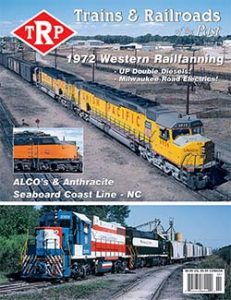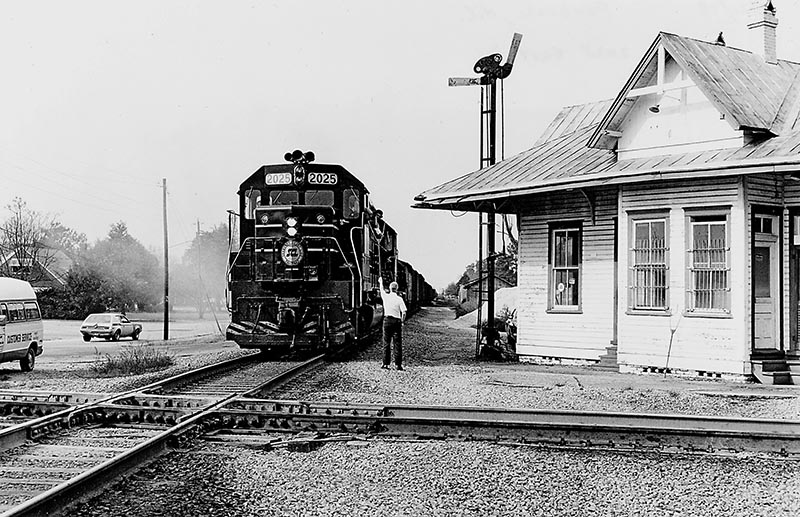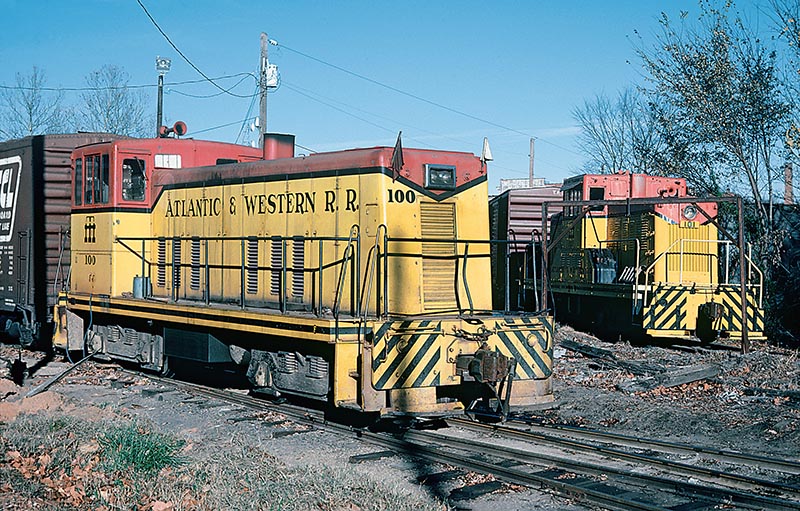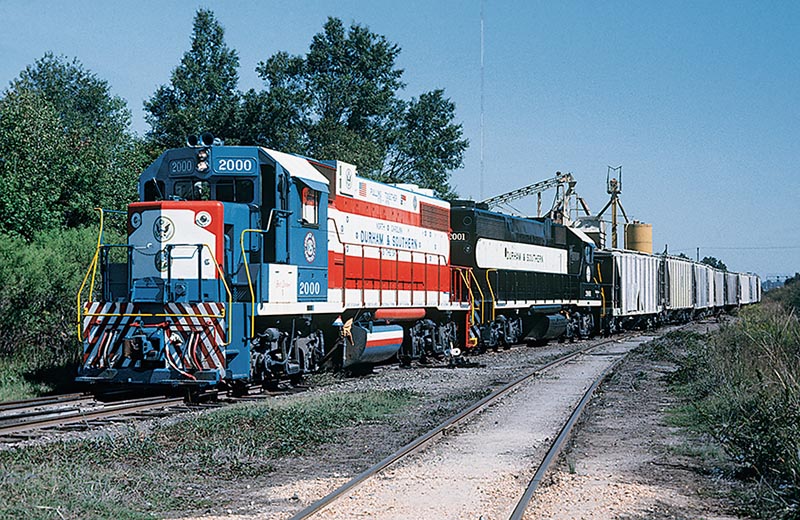 By Mike Small/photos by the author
By Mike Small/photos by the author
One of the places that I have had the greatest time chasing and photographing trains has been eastern North Carolina, especially in the mid to late 1970s and into the 1980s. I didn’t show up early enough to experience the two legacy carriers in that area, Seaboard Air Line and Atlantic Coast Line, since the two roads had merged to form Seaboard Coast Line in 1967. However, I became quite used to, and accepting of, the SCL locomotive scheme of black with yellow and silver markings, which was derived from the last livery of the ACL. I think this was a well-balanced design and in my opinion, looked better than the subsequent locomotive schemes of Family Lines, Seaboard System and CSX. For a while some locomotives were being used in the Seaboard Air Line Meteor Stripe scheme and relettered for Seaboard Coast Line. In addition, I saw a considerable amount of freight and maintenance of way equipment still painted and lettered for ACL and SAL.
The main line of the former Atlantic Coast Line crosses the Atlantic coastal plain of North Carolina on its way from Richmond, Va., to Tampa, Fla. Running a roughly parallel route between Virginia and Florida, the main line of the former Seaboard Air Line is farther to the west on the edge of the hilly Piedmont part of the state. Today the former ACL main line is intact, but around 1987 the main route of the former SAL was abandoned through Virginia and part way into North Carolina. There is talk today of possibly restoring the removed trackage as part of a proposed high speed passenger route. Both roads had other lines and branches, and of particular note is the SAL’s Wilmington-to-Hamlet line, which includes the longest straight stretch of railroad in the U.S. at 78.86 miles from curve to curve! SAL’s line west of Hamlet goes to Monroe, where it splits to the north, serving Charlotte and a connection with the former Clinchfield Railroad at Bostic, while a southern route heads for Atlanta, Ga., and Birmingham, Ala.

Operator Leonard Perrit hands up orders to Seaboard Coast Line Extra 2025 East at Pembroke, N.C., on November 21, 1978. The train is running from Hamlet to Wilmington on the longest tangent track in the U.S. and is about to cross the former ACL Virginia to Florida main line.
In my railfanning days of the Seaboard Coast Line-era, Southern Railway also operated through eastern North Carolina, but I didn’t pay as much attention to this road since I already lived near Southern’s main line through the central part of the state. Southern Railway’s chief presence in eastern North Carolina was the trackage between Greensboro and Morehead City, and the route of the original Norfolk Southern Railway, which the Southern acquired in 1974. Their main line ran from the Norfolk, Va., area through Raleigh to Charlotte.

On October 21, 1977, I managed to capture Atlantic & Western’s entire roster at Sanford, N.C., which consisted of General Electric 70-ton switcher #100 and ex-Durham & Southern Porter 80-ton center cab #101. If you have a good memory, you will recall having seen members of their per diem boxcar fleet roaming around the country in the 1970s and ‘80s. It numbered 300 at the time of this photo, quite an accomplishment for a railroad equipped with two diminutive switchers!
I frequently photographed Amtrak’s passenger trains in eastern North Carolina, including the Silver Star, Silver Meteor, Palmetto, and Carolinian. The Silver Star and Silver Meteor are both New York to Florida trains, but the Star was the easiest of the two for me to catch, since it showed up during more convenient hours and ran on a route closer to where I lived. The original Auto-Train also operated on the former ACL main. I once drove all the way to Rocky Mount to take a late night time-exposure of it during a routine servicing stop, but forgot that it was on one of its off-days…



